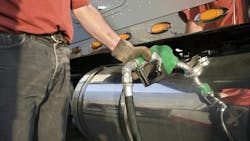Several years ago, NACFE came up with the phrase “the messy middle.” The term describes what was happening in trucking in 2019 and what is still happening in trucking today as the industry moves toward a cleaner future.
When we first started using the term, we got pushback from some folks who said they thought it sounded negative. Our contention was—and still is—that messy is not inherently bad. Sure it can be chaotic and can make it difficult to make decisions, but it also is exciting.
For years, commercial vehicles were powered primarily by diesel, with some fleets choosing gasoline or compressed natural gas in some applications. But for most fleets, regardless of duty cycle, diesel was the fuel of choice.
Although diesel is still an option, it is not the only one. Fleets now have many more choices, and they must pay more attention to matching duty cycle to fuel to operate as efficiently as possible and even remain successful as a business.
Having trucks powered by different fuels might mean operating the trucks differently depending on how you handle specific routes. It can also complicate things for drivers and technicians. Different fuels may make the vehicles drive differently. For example, with battery electric vehicles, drivers need to get used to regenerative braking. These differences are not nsurmountable, but they may require a little training and some adjustment.
See also: Fleets Explained: How are electric vehicles different?
Although there always will be common components on trucks, there are differences in how the vehicles need to be serviced. Some of those differences revolve around ensuring technician safety.
Fleets that opt to purchase alternative-fueled vehicles may also have to interact with people and organizations that they have not had to deal with in the past. For fleets that choose battery electric or hydrogen fuel cell vehicles, this means finding the correct person at the local utility or fuel supplier and engaging with them early enough so that there will be enough energy at the site before the trucks arrive.
Again, this is not an insurmountable problem. It just means being prepared to do business in a different way that involves more people and takes more time.
I’ve talked to quite a few fleets that are moving into the zero-emission future, including the 10 that participated in Run on Less—Electric Depot. All of them admitted that they have faced challenges and that things got difficult. All of them, however, say they are committed to exploring options that will allow them to move freight in a way that will result in fewer emissions. And they are quick to add that just because something is difficult doesn't mean you should shy away from doing it.
See also: Run on Less shows how depots can electrify today
Maybe BEVs are not right for you. Maybe RNG vehicles make more sense. Or perhaps diesel still is the best option for you. Regardless of the fuel used, the goal should be to operate as efficiently as possible even if the path you choose has some obstacles that will have to be overcome.
And remember, the right choice for today might not be the right choice in five years, so continue to stay engaged and informed on all the developments happening with powertrains. Change can be difficult, but it also can be exciting. I think it is worth it to wade through this messy middle to get to a better tomorrow for goods movement.
About the Author

Michael Roeth
Executive Director
Michael Roeth is the executive director of the North American Council for Freight Efficiency. He serves on the second National Academy of Sciences Committee on Technologies and Approaches for Reducing the Fuel Consumption of Medium and Heavy-Duty Vehicles and has held various positions with Navistar and Behr/Cummins.
